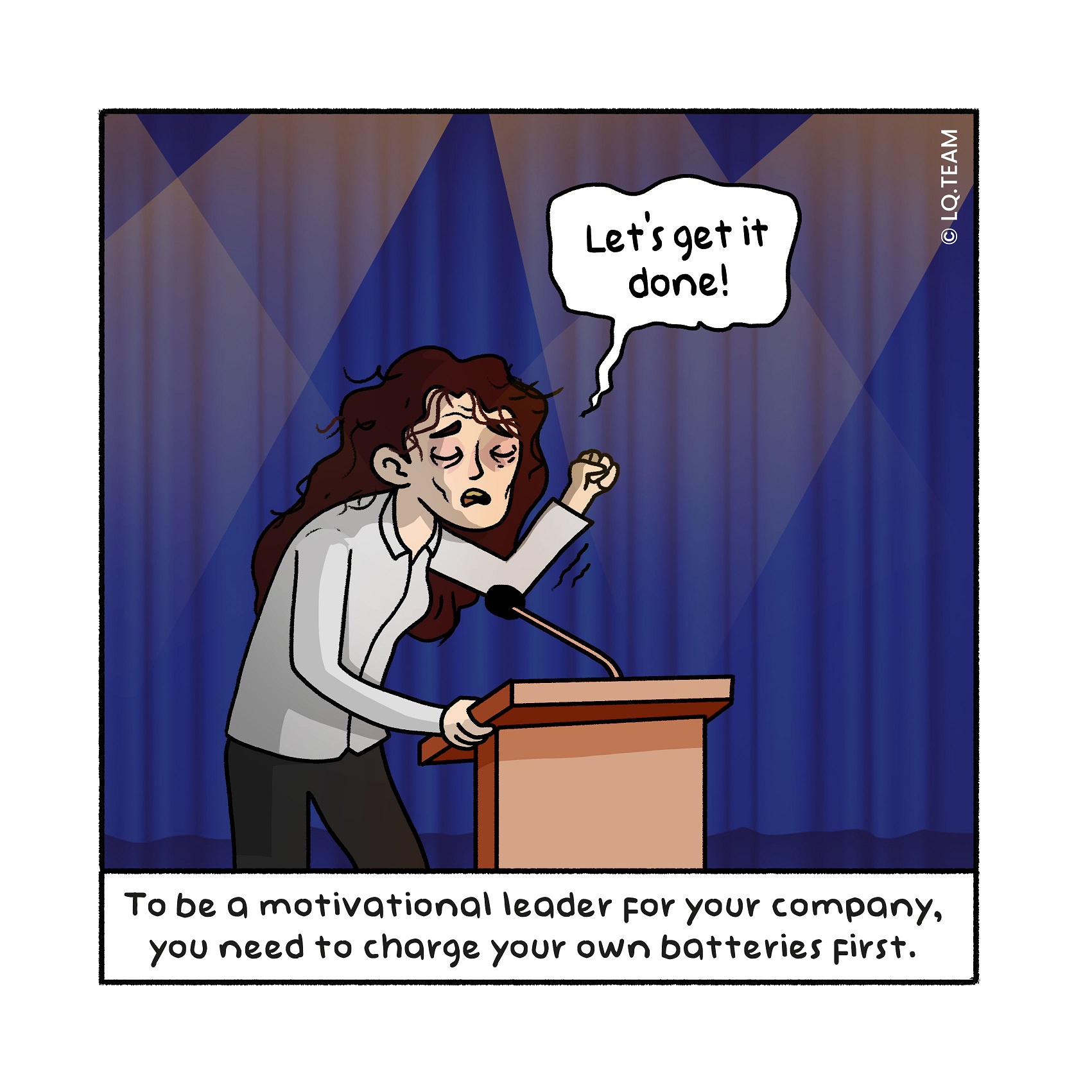
Nut to crack: How do you charge yourself and your team for the medium or long term?
Leading change can feel tiring. As a change leader or enabler, you are often the one who absorbs stress from others and must give energy in return –and for an extended period. How do you keep yourself and others energised?
Nutcracker: Charge your own batteries first
Consider ways to recharge your mental, emotional, physical and spiritual bat- teries. The top-level sports world shows us that the following seven things help to charge your energy levels:
- Good-quality sleep, and the right amount of sleep
- Good diet/nutrition
- Exercise
- Perspective/humour
- Relaxation (active and passive)
- Passion: something you do purely for yourself (e.g. painting, fishing)
- Positive social contacts
Of course, the above applies not only to you but also to other change leaders and enablers. The support tool below and the practical example illustrate how you can charge the batteries at the team level. Make room for this.
Support tool: Personal shield
Maintaining energy as a team helps connect on a deeper level, as a person, not just as a worker. Creating and sharing a personal shield can help with this. A bottle of wine might help as well.
Give people a flipchart or, if necessary, a PowerPoint slide and let them create a personal shield in which they answer a set of personal questions, such as the seven example questions listed. It often helps to share the questions in advance so people can think about them for a bit.
Each team member shares their shield one by one, and colleagues are al- lowed to ask questions. The confidentiality of this conversation is important – this way, you build mutual understanding and trust.
Personal shield example questions:
- What have been some deciding moments in my life that shaped me into who I am today?
- What are my personal aspirations? Where do I want to go?
- What is my inspiration; what brings a twinkle to my eyes?
- What is my personal challenge for the coming 12 months?
- What do I want to leave behind? What will my legacy be?
- When do I need help? How can you see if I am stressed?
- What is my life motto?
Real-life example: Reset after reflection
More than a year into their change journey, Rogerio experiences intense fatigue in him self and from his team members. They have undertaken an intensive journey, overcome obstacles, fallen, got up again, and grown enormously. But now they seem to be running on empty. Nevertheless, Rogerio knows they are only halfway through the journey, if he looks at what is still needed to anchor the transformation. He wonders how he can “reset” himself and the team, and decides to organise a day of reflection led by an ex perienced facilitator in a location off the beaten track, in nature, in order to disconnect from the work environment. The facilitator asks everyone to draw their own lifeline: the big changes from childhood to the present, with highs and lows. In oneonone conver sations, team members explore the individual themes, life lessons and conditions that fostered or held back growth on their life journey. Then the facilitator asks them to draw a parallel with the “lifeline” of the organisation’s change journey so far and to connect the individual and organisational journeys. This activity releases energy and deepens personal and team insight, which is crucial to continuing the journey ahead.
Tip for change leader
Keep a close eye on your traffic light. Stress signals are like the red lights on a car’s dashboard, showing action or maintenance work is required. These stress signals can be physical or mental in nature. Physical stress signals include physical pain, emotional tension, fogginess and fatigue. Mental stress symptoms can be sadness, irritation and worry. Please don’t ignore these stress signals; address them headon. You may need to rest, but often it also helps – more than it hurts – to actively bring up resentments or express the desire to reduce stress. Not recognising the signals in time will eventually make you sick.
Tip for change enabler
Discuss charging the individual batteries of the change leaders you are enabling; most often more attention should be paid to this in the change processes.
Kernel: Take care of yourself so that you can take care of others
There is a parallel with the instructions you receive when boarding a plane: put on your own oxygen mask first before helping others. If you notice your fatigue increasing and you are slowly becoming exhausted, adjust and act. Recognise your own “traffic light” of stress signals, and take those actions that help you from the orange back into the green zone as an individual or team.
